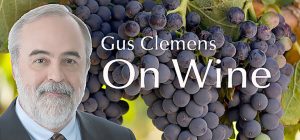Continuing our adventure in the world of wine descriptors.
• Tannin: Tannins come from grape skins, seeds, and oak barrels. Tannin creates puckery, black tea-like sensations in your mouth that some people hate and others love. Tannic wines do well with fat-rich red meat because tannins cut through the fat coating your tongue, enhancing the beef experience. Tannins also are key components of wine built for aging, as they preserve the wine. Many tannic wines—Italian nebbiolo, for instance—are held in bottle for years before release to allow the tannins to mellow.
All tannins are not the same. Tannins are mostly characteristic of red wines rather than whites because most tannins come from the skins, stems, and seeds. White wines spend very little time on the skins, stems, and seeds, while red wines can spend many weeks in contact. When tannins are harsh or aggressively drying, they are bad. When they are chewy or rustic, they can be good depending on your palate. When they are silky, integrated, smooth, round, lush, velvety, or supple, they are good, even if the wine writer cannot really tell you difference between round and lush or smooth and silky.
Dusty tannins are a special, Janus-faced category. Generally, dusty refers to tannic density. Dusty tannins may provide a pleasing, refined background to fruit. Or they can be a drying, powdery note that steals flavor at the finish. Like many wine descriptors, “dusty” can just be a wine writer throwing adjectives against the wall.

• Structure: The balance of tannin, acidity, and alcohol, plus fruit and sugar level constitute a wine’s structure. The combination of those elements determine the overall feel in the mouth and perception of the wine. Wines that lack structure are thin, flabby, disjointed, too tannic or too acidic. It is possible for a wine to have too much structure, usually because it is too tannic and out of balance with acidity and alcohol. Good structure, on the other hand, is a characteristic of high quality wines. Balanced structure allows wine to evolve over time in the bottle and develop more depth and complexity.
Tasting notes
• Corvo Irmàna Frappato Red Wine 2019: Bright, light, fresh, fruity, delicate. Fun, easy drinker will please those put off by heavier, more tannic/serious red wines. $15-17 Link to my review
• Hope Family Wines Treana Sauvignon Blanc, California 2022: Smooth, very approachable; retains food-friendly acidity. $18-20 Link to my review
• Project M Anicca Oregon Chardonnay, Eola-Amity Hills AVA 2022: Nicely structured, elegant with savory core from prime region for quality chardonnay. $40 Link to my review
Last round: Why are frogs so happy? They eat whatever bugs them. Wine time.

